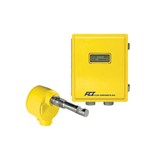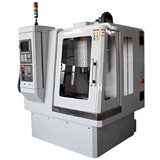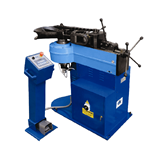Critical Aspects of Selecting Industrial Embedded Systems
Industrial embedded systems are the core of modern manufacturing, automation, and control processes. These systems are designed to perform specific tasks reliably and efficiently, making them crucial to the smooth operation of industrial equipment.
Choosing the right embedded system is essential. The right system improves performance, makes things work better, and reduces downtime. On the other hand, a poor choice can result in inefficiencies and failures. This article will highlight the key features when selecting an industrial embedded system.
What is an Embedded System?
An embedded system is a specialised system comprising components and software designed to perform a specific task efficiently and reliably. It can work independently or as part of a more extensive system.
Typically, embedded systems include a few key components, like a microcontroller or microprocessor, along with software to control the device. The system uses hardware to perform its task and connects to the outside world through input and output interfaces. Some embedded systems also have communication features, power management, and an operating system for user interaction.
Types of Embedded Systems
Embedded systems generally share standard features, but specific embedded systems may have unique characteristics based on their particular functions. Here are some examples:
-
Networked Embedded Systems
Networked embedded systems are connected to other devices, sharing and receiving data through a network interface. These systems, often general-purpose processors, can be wired or wireless. They are commonly found in industrial control, building automation, and monitoring systems like weather stations, security systems, or ATMs.
-
Real-Time Embedded Systems
Real-time embedded systems respond to input signals or events in real time, making reliability crucial. They are often used in safety-critical fields, large machinery, or transportation systems to ensure safety or performance. There are two types:
-
Soft real-time systems are operate within a time frame but more flexibly; failure may reduce quality but not cause total failure (e.g., media players, microwaves).
- Hard real-time systems are strictly time-bound; failure to meet the time frame results in system failure (e.g., air traffic control, military equipment).
-
-
Mobile Embedded Systems
Mobile embedded systems are designed for mobile devices like phones, tablets, calculators, and digital cameras. These systems prioritise compact size and low power consumption to maximise efficiency in limited space.
-
Stand-Alone Embedded Systems
This embedded system operates independently without needing a host computer or network. They process input signals into digital output on a connected device. Examples include wearable devices, music players, household appliances, and some digital cameras. These systems do not share data with a wider network and function independently.
8 Key Considerations for Embedded Systems in Industrial Automation
Each of these elements plays a vital role in ensuring efficient operation, avoiding performance bottlenecks, and maintaining system integrity in demanding industrial environments.
-
Power Processing and Memory Capacity
These factors determine how effectively the system can handle complex tasks, process data in real time, and manage multiple operations at once. If the processing power or memory is terrible, it can cause delays and slow production. So, it is important to ensure the system's capabilities align with the application's needs.
-
Real-Time Performance
Systems must respond quickly to inputs and execute tasks within strict time limits to keep operations running smoothly and avoid delays. Achieving this requires careful design of both hardware and software. Efficient communication, strong security, and consideration of environmental factors all help the system perform reliably in real-time. Also, development tools and software that support real-time processing should be used to meet performance standards.
-
Compatibility and Integration
Embedded systems in industrial settings must work with existing technical networks and infrastructure. This compatibility ensures that new systems can be added without disrupting current operations. Integration is easier when systems follow industry standards and support common communication protocols, allowing them to work smoothly with other devices and systems already in place.
-
Trust and Security
System failures can lead to production stops and significant revenue loss. To reduce these risks, use error correction methods and strong cybersecurity protocols to improve system efficiency and protect against threats. Techniques such as encryption, secure authentication, and intrusion detection are essential for defending against cyberattacks.
-
Environmental Resilience
Industrial environments can be tough, with extreme temperatures, dust, moisture, and physical impacts. To ensure reliable operation, embedded system hardware must be built to handle these conditions. This typically involves sealing components in protective enclosures to shield them from environmental hazards. The system's design should prioritise durability, ensuring it can run continuously without performance issues.
-
Development Tools and Manufacturer Support
Manufacturers should provide development tools and libraries tailored to their embedded systems, making it easier for developers to design, test, and deploy applications. Reliable technical support is also important, particularly for complex systems. Good documentation, troubleshooting resources, and responsive customer service are key to successful system implementation.
-
Cost and Flexibility
High-end systems offer advanced features and performance, but may be too costly. Find a balance between cost and the application's specific requirements, ensuring the system meets your needs without unnecessary expense. Also, systems that support future expansion and easy maintenance can provide better long-term value, improving operational efficiency and reducing overall costs.
-
Cybersecurity Measures
Protecting these systems from cyber threats is essential to maintaining their integrity and ensuring safe operations. Strong cybersecurity measures, such as encryption, secure authentication, and intrusion detection systems, are necessary to defend against attacks and prevent unauthorised access. These protections are vital for keeping data secure and ensuring continuous, safe operations in today's digital industrial environment.
Embedded System Application in Various Industry
Here are some industries that needed embedded system:
-
Aerospace Industry
The aerospace industry relies heavily on embedded systems for air traffic control, flight systems, avionics, collision avoidance, black boxes, and more. These systems are continuously developed to ensure optimal performance, reliability, and safety in aerospace operations.
-
Healthcare
Embedded systems have transformed healthcare, enabling doctors to diagnose without surgery, track treatment progress, and prioritise care. Patients can manage their health at home using devices powered by embedded technology.
-
Automotive and Transportation
Embedded systems are crucial in the automotive and transportation sectors, driving innovations in navigation, system performance, and safety. Intelligent Transport Systems (ITS) developed by companies like Google, Audi, and Toyota enhance road efficiency and passenger comfort.
-
Fire Safety Systems
Fire safety systems, like microcontrollers and sensors, use embedded technology to detect and respond to hazards. These systems are often connected to IoT, enhancing safety in smart homes and buildings. Cloud-based solutions offer remote access and improved safety measures.
-
Railway Systems
Railway systems are improving with embedded computing, using advanced networking and real-time control to manage signals, handle traffic, reduce accidents, and ensure safer travel.
In conclusion, choosing the right industrial embedded system is essential for improving performance and reducing downtime. Businesses can ensure their embedded systems meet current demands and support future growth by focusing on processing power, real-time performance, compatibility, and resilience.
Make an Informed Choice with Our Embedded Computer Comparison Tool
Trusted by over 6.7 million industrial buyers since 2011, we help you:
- Compare Prices and Specs: Access comprehensive details on various Embedded Computers to find your ideal match.
- Assess Total Costs: Analyse ongoing maintenance and consumables to understand the true cost of ownership.
- Review Suppliers: Check out supplier credibility and customer feedback for a reliable purchase.
Easily compare Embedded Computers and choose the best for your business now!
FAQ:
Q: What is an industrial embedded system?
A: An industrial embedded system is a specialised combination of hardware and software designed to perform specific tasks efficiently and reliably within industrial environments. These systems are integral to automation, control processes, and manufacturing operations.
Q: Why is selecting the right embedded system important?
A: Choosing the right embedded system improves performance, reduces downtime, and ensures reliability. A poor choice can lead to inefficiencies, increased costs, and potential system failures.
Q: What factors should be considered when selecting an embedded system for industrial use?
A: Key factors include processing power, real-time performance, compatibility with existing systems, environmental resilience, cybersecurity, and cost-effectiveness.

(1).jpg)







-160x160-state_article-rel-cat.png)
-160x160-state_article-rel-cat.png)





-205x205.jpg)
(1)-205x205.jpg)